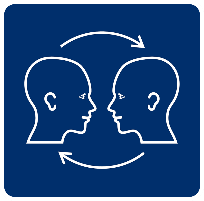Arabic/English Symbol Dictionary: Early challenges and technological opportunities
Session
P.8
Poster
-
- E A Draffan (University of Southampton)
- Nawar Halabi (University of Southampton)
- Mike Wald (University of Southampton)
- Amal Idris (Hamad Medical Center – Qatar)
- Amatullah Kadous (Hamad Medical Center – Qatar)
- Aejaz Zahid (Mada Center – Qatar)
Funding/Sponsorship
Supported by the Qatar National Research Fund
Summary
[Note: The posters will be manned during refreshments and lunch breaks: 11.15-11.50; 12.45-13.45; 15.30-16.15.]
This poster aims to explore the cultural and linguistic challenges of developing a symbol dictionary for Arabic and English speaking AAC users in Qatar. An environment where these two languages cross the boundaries of the home environment, schooling and specialist support.
Method/Activities/Techniques
A participatory approach is being adopted using action research with forums, interviews including quantative and qualitative methods for gathering data and working with AAC users, specialists, school teachers and those caring and supporting users.
Results/Findings
During the first six months of the project it has become clear that many aspects of consistent symbol use in the mother tongue of many AAC users is not possible due to a lack of suitable symbols, their appropriate cultural and linguistic values, a lack of Arabic speaking specialists, and the time needed to adapt present symbol sets.
Conclusions
Any Arabic Symbol Dictionary developed for the needs of users in Qatar should be culturally and linguistically acceptable as well as being bi-lingual with English as the second language. Any symbols developed or adapted need to complement those already introduced, being easily understood. The choices of symbols need to be agreed across all groups and fit the requirements of the local stakeholders and users.
Level of Session
General
Age Group
Child
Interest
Special school





